Veneers in Ha Noi
Search and Compare the Best Clinics and Doctors at the Lowest Prices for Veneers in Ha Noi

Find the best clinics for Veneers in Ha Noi
With Medijump you can browse 4 facilities offering Veneers procedures in Ha Noi. The cheapest price available is $1 in Ho Chi Minh City
Veneers in Vietnam
Price: $ 1
Veneers in Ho Chi Minh City
Price: $ 1
Veneers in Da Nang
Price: $ 240
Vietnam offers the best prices Worldwide
Price: $ 1
From 10 verified reviews
ziad sameh, 24 October 2020
I had my wisdom teeth been extracted in the Australian dental clinic with Dr. Van she's so professional. And all the staff are friendly and professional. Highly recommend it
From 6 verified reviews
Wndy, 11 August 2020
I've been to several hospitals in Hanoi over the years, but visited Thu Cuc Hospital for the first time this month. You're given a translator as soon as you arrive and they help every step of the way, so it's really easy to communicate with the staff as well as understanding the recommendations and treatments prescribed. The hospital seems to be run quite efficiently, and everything was "western standard" clean. I saw both a Cuban doctor and a Vietnamese doctor; both did the appropriate exams and tests, and prescribed the recommended treatments (I'm a nurse and I actually do check this stuff before I blindly follow what I'm told by medical staff - something I've especially learned to do here in Vietnam). It seemed to be quite well-equipped, too. So, I'm impressed! Prices are less than in many of the private hospitals and I felt that I was treated very well. I'd definitely return to this hospital when the need for medical care arises again.
Nha Khoa Louis, can be found in Ba Dinh, Ha Noi, Vietnam and offers its patients Veneers procedures as well as 44 other procedures, across 2 different procedure categories. The price of a Veneers procedure varies from ₫6,000,000 to ₫8,000,000, and the average price is around ₫2,409,198. Currently, there's no information available about the doctors at the Dental, and Nha Khoa Louis is not accredited by any recognised accreditations institutions.
Greenfield Dental, can be found in Cau Giay, Ha Noi, Vietnam and offers its patients Veneers procedures as well as 29 other procedures, across 4 different procedure categories. The price of a Veneers procedure varies from $400 to $500, and the average price is around $2,409,198. Many medical professionals work at the Dental, with 9 in total, and Greenfield Dental is not accredited by any recognised accreditations institutions.
Compare Before & After Photos of _procedure_photos.phpVeneers
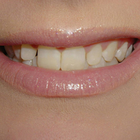

Front view
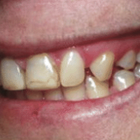
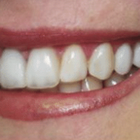
Half-side view
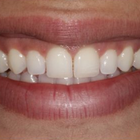
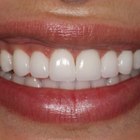
Front view
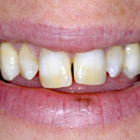
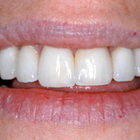
Front view
WHY US?
At Medijump, we're making medical easy. You can search, compare, discuss, and book your medical all in one place. We open the door to the best medical providers worldwide, saving you time and energy along the way, and it's all for FREE, no hidden fees, and no price markups guaranteed. So what are you waiting for?

Free

Best Price

Widest Selection

Risk-Free
What you need to know about Veneers in Ha Noi

Dental veneers are thin covers that are attached to the surface of teeth to enhance their appearance. The non-invasive dentral procedure is previously popular among those with damaged or discolored teeth. Nowadays, however, the procedure is seen as the ideal method of achieving the ‘perfect smile.'
Veneers can be used to hide uneven, misaligned or simply imperfect teeth. The veneers are cemented over the existing teeth and fixed into place – there are two main types of veneer; Porcelain and Composite. Porcelain veneers are more expensive and appear more natural, being made in a laboratory so require multiple visits. There is often the need to alter the existing teeth, removing some of the mass. Composite veneers are made of the same materials used for cavity fillings. They can usually be made quickly, and are sculpted directly on the teeth instead of in a laboratory. Thus allowing the procedure to be done in a day.
What does a Veneers Procedure Involve?
Veneers are used primarily for aesthetics. This type of treatment procedure is perfect for people who have gaps in their teeth, stains, as well as people who may have chipped a tooth. Veneers are custom-made shells designed to fit the shape of your teeth and to be attached to your front teeth to improve the size, shape, color, and length.
Two main types of veneers are:
- Composite Veneer - this type can be created by your dentist on the same day and directly applied to your teeth. You will only need a single appointment to complete the procedure.
- Porcelain Veneer - this type is manufactured in a laboratory. Opting for a porcelain veneer will require you to have two appointments. First, is to prepare your teeth (enamel removal) and mold a model of your teeth to be created in the lab. The second is to finally cement your veneers onto your teeth.
The most commonly used type of Veneer is the Porcelain Veneer as it appears more natural and can resist stains better than composite veneers. Besides the two main types of veneers, some dentists may also offer no-prep veneers. These may include specific brands of procelain veneers like Vivaneers and Lumineers. They are less invasive to apply since the layers of tooth under the enamel aren't removed.
In terms of anesthetics, local anesthesia is not usually required while undergoing the whole procedure. However, depending on how you handle pain and discomfort, you may request to receive local anesthesia or sedation.
Aside from giving you a pleasing smile, veneers are resistant to staining and offer the best fix to broken or damaged teeth.
How Long Should I Stay in Ha Noi for a Veneers Procedure?
This type of procedure is an outpatient treatment, meaning you may be able to go home after undergoing the procedure. However, you will be required to do a follow-up check-up with your dentist to assess the placement of your veneers and in most cases, the procedure has to be carried out over 2 separate occasions, just a day or two apart. Since this is a non-invasive treatment, stitches are not required, but you will be required to stay in Ha Noi for at least a few days.
What's the Recovery Time for Veneers Procedures in Ha Noi?
There is actually no recovery time after the placement of your veneers. You can also return back to your daily routines including exercise immediately after your trip. As for the enamel removal, you may experience some mild discomfort for about a week. It is best that you avoid very hot or cold foods, including hard, chewy or crunchy food. When your sensitivity wears off, you can return to your normal dietary habits.
What sort of Aftercare is Required for Veneers Procedures in Ha Noi?
Once your dental veneers have been placed and you have completed the whole procedure, you should commit yourself to good oral hygiene, regular visits to your dentist and a good healthy lifestyle. Dental Veneers can last beyond 10 years now, however, just like your natural teeth, veneers are also still susceptible to damage. This is why aftercare is very important to help with the longevity of your new teeth.
What's the Success Rate of Veneers Procedures in Ha Noi?
Over the past years, many studies have reported that over 91% of people who have had dental veneers experienced highly positive results. However, potential risks and side effects after undergoing this procedure are a possibility. Just like any other dental restoration, dental veneers can have some side-effects, for example:
- Tooth sensitivity - since this procedure will require the removal of some enamel, your teeth will become slightly sensitive, following the placement of your veneers.
- Response from gum tissues - your gum tissue might take some time to adjust to your newly placed veneers. Expect to have some minor inflammation and/or discomfort in your gums.
- Risk of trauma - once your teeth’s enamel is removed, it will become more sensitive, thus it will be even possible for the pulp within your teeth to die.
- Possible Issues with placement - it's possible for your teeth to have issues with decay or chipping along the outer portion of your veneers. Gum irritation may also be possible. Other problems may include rough-edged veneers and overhanging veneers.
- Overall Discomfort - experiencing some discomfort after the procedure is to be expected. If you are particularly sensitive, it is advisable that you take an over the counter medication to help you relax and treat your pain.
Are there Alternatives to Veneers Procedures in Ha Noi?
You also have to be aware that this type of treatment option is not for everyone. If you are not a good candidate to undergo the procedure, note that there are still possible alternatives that will be suited for you. These alternatives may include:
Orthodontics - if you have severely crooked teeth or malocclusion, dental veneers are not for you. You may want to consider a more comprehensive orthodontic procedure to treat your case.
Dental crowns - these are quite similar to dental veneers. These are also custom-made to match the shape of your teeth. However, unlike veneers, a crown extends all the way around your tooth, meaning your dentist will remove a large portion of your dental structure. These crowns are perfect for patients who have considerable damage that affects the strength and structure of their teeth.
Bonding - often called composite veneers. This is typically for patients with an insufficient amount of tooth enamel.
Whilst the information presented here has been accurately sourced and verified by a medical professional for its accuracy, it is still advised to consult with your doctor before pursuing a medical treatment at one of the listed medical providers
No Time?
Tell us what you're looking for and we'll reachout to the top clinics all at once
Enquire Now

Popular Procedures in Ha Noi
Prices Start From $1

Prices Start From $1

Prices Start From $48

Prices Start From $1

Prices Start From $1

Prices Start From $1

Prices Start From $11

Prices Start From $45

Recommended Medical Centers in Ha Noi for Veneers

- Interpreter services
- Translation service
- Religious facilities
- Medical records transfer
- Medical travel insurance
- Health insurance coordination
- TV in the room
- Safe in the room
- Phone in the room
- Private rooms for patients available

- Interpreter services
- Translation service
- Religious facilities
- Medical records transfer
- Medical travel insurance
- Health insurance coordination
- TV in the room
- Safe in the room
- Phone in the room
- Private rooms for patients available

- Interpreter services
- Translation service
- Religious facilities
- Medical records transfer
- Medical travel insurance
- Health insurance coordination
- TV in the room
- Safe in the room
- Phone in the room
- Private rooms for patients available

- Interpreter services
- Translation service
- Religious facilities
- Medical records transfer
- Medical travel insurance
- Health insurance coordination
- TV in the room
- Safe in the room
- Phone in the room
- Private rooms for patients available

- Interpreter services
- Translation service
- Religious facilities
- Medical records transfer
- Medical travel insurance
- Health insurance coordination
- TV in the room
- Safe in the room
- Phone in the room
- Private rooms for patients available

- Interpreter services
- Translation service
- Religious facilities
- Medical records transfer
- Medical travel insurance
- Health insurance coordination
- TV in the room
- Safe in the room
- Phone in the room
- Private rooms for patients available

- Interpreter services
- Translation service
- Religious facilities
- Medical records transfer
- Medical travel insurance
- Health insurance coordination
- TV in the room
- Safe in the room
- Phone in the room
- Private rooms for patients available

- Interpreter services
- Translation service
- Religious facilities
- Medical records transfer
- Medical travel insurance
- Health insurance coordination
- TV in the room
- Safe in the room
- Phone in the room
- Private rooms for patients available
Veneers in and around Ha Noi
About Hanoi
Hanoi is Vietnam’s capital and the second-largest city by population. Located on the banks of Red River, it’s the major metropolitan and political center of the country. This chaotic and busy city is brimming with history, culture, and character. Known as one of the most ancient capitals in the world, the city charms its visitors with well-preserved colonial buildings, pagodas, and museums. Foreign tourists normally travel to the city to enjoy its history, but today, some of these foreign tourists are heading to its clinics and hospitals. Affordable healthcare and high-quality medical centers are the main factors that have attracted medical tourists and the most sought-after treatment is cosmetic surgery and dentistry.
Popular Parts of Hanoi
Hanoi offers many kinds of attractions for its visitors. The most popular part of the city is the Old Quarter, where visitors can experience Asia at its rawest. This 2000-year-old street is packed with over 1000 merchants. In this area, you can also get a glimpse of the strong influence the French had via its architecture. The area of Ba Dinh is also popular among foreign tourists. It’s the center of governance in Vietnam, as well as home to numerous historic sites, such as the One Pillar Pagoda and Hanoi Flag Tower. Those who are fascinated with Vietnam’s history and culture should visit the Temple of Literature, Quan Su Pagoda, or explore its many museums. Some of the popular museums are the Vietnam Women’s Museum, Army Museum, and the Vietnam National Museum of Fine Arts.
Transport in Hanoi
Noi Bai International airport is the biggest airport in Vietnam that serves both domestic and international flights to major cities in Asia and Europe. Several budget airlines operate from this airport, such as Jetstar Pacific and VietJet Air. Various modes of transport are available to get around the city. Taxis can be hailed from the street or by phone and are generally reliable. Motorcycle taxis and cyclo (similar to trishaw) are two of the most affordable options. Buses are also available. However, the easiest way to get around is by Grab motorbikes, which is similar to Uber.
Visas in Hanoi
Holders of passports issued to 24 countries, including Cambodia, Denmark, and the UK, are allowed to visit and stay in Hanoi for up to 90 days without a visa. Vietnam has introduced an electronic visa system in 2017, which is available for citizens of 81 countries, including all EU countries, Australia, and Japan.
Weather in Hanoi
Hanoi experiences a warm and humid subtropical climate. The summer, starting from late April, is characterized by sunny days and heatwaves, with occasional rain. The average temperature is around 27.5°C. Winter, from December to January, has a lot of cold days and the temperature can drop to 7°C. Autumn and spring have pleasant weather.
Additional Info
- Local Currency: Vietnamese Dong (VND) is the official currency, and 1 USD will get you around 23,270 VND.
- Money & Payments: ATMs can be found easily around the city. Cash is king, but credit cards are accepted in various hotels. Tipping is not expected but appreciated.
- Local Language: Vietnamese is the official and most spoken language in Hanoi. English is widely spoken, particularly in tourist areas.
- Local Culture and Religion: Most people in Hanoi follow Vietnamese folk religion or are not religious. Other religions, such as Buddhism and Christianity, are freely practiced.
- Public Holidays: Hanoi celebrates several public holidays, including New Year’s Day, Tet Holiday, Hung Kings Temple Festival, Reunification Day, International Labor Day, and National Day.
Popular Searches
- Plastic Surgery in Thailand
- Dental Implants in Thailand
- Hair Transplant in Thailand
- Breast Augmentation Thailand
- Gastric Sleeve in Thailand
- Gender Reassignment Surgery in Thailand
- Laser Hair Removal in Bangkok
- Botox in Bangkok
- Dermatology in Bangkok
- Breast Augmentation in Bangkok
- Coolsculpting in Bangkok
- Veneers in Turkey
- Hair Transplant in Turkey
- Rhinoplasty in Turkey
- Stem Cell Therapy in Mexico
- Rhinoplasty in Mexico
- Liposuction in Mexico
- Coolsculpting in Tijuana
- Rhinoplasty in Korea
- Scar Removal in Korea
- Gastric Sleeve in Turkey
- Bone Marrow Transplant in India
- Invisalign in Malaysia
- Plastic Surgery in the Dominican Republic
- Tummy Tuck in the Dominican Republic
- Plastic and Cosmetic Surgery in Poland
- Rhinoplasty in Poland
- Hair Implant in Poland
- Dental Implants in Poland
- IVF in Turkey



